
A front differential is an important component, especially in four-wheel and all-wheel-drive vehicles. This component rotates the front wheels at different speeds, mostly when turning. For example, when making a curve, the left front wheel spins "less" distance than the right front wheel. The differential compensates for this, making both wheels spin effectively. In short, it distributes engine power between the two front wheels, improving vehicle handling and performance.
How do I know if my differential is bad?
A faulty differential may show symptoms like unusual noises (whining, rumbling, or clunking) when you drive, especially during turns. You might also notice fluid leaks under the vehicle, often thick and smelly. A hard-to-turn steering wheel is also a symptom. Regular vehicle inspections and steering fluid checks can early detect differential issues.
Is a front differential leak serious?
Yes. The differential uses fluid to lubricate and cool its internal components. So, if the fluid level drops due to a leak, it'll make components badly lubricated. Then, it results in extra wear, overheating, and eventually component failure. These issues will become costly repairs or even cause total differential loss. It's essential to check leaks promptly to keep safe and efficient vehicle operation.
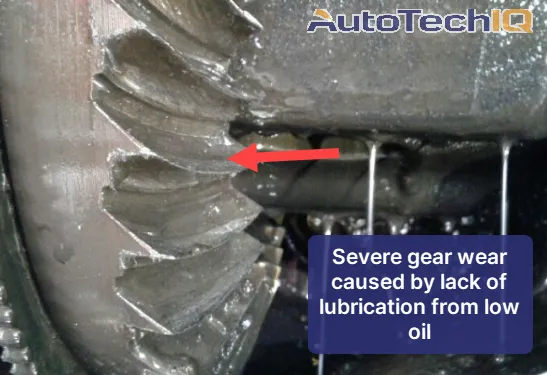
How much does it cost to fix a differential?
The cost for this depends on the specific problem, vehicle model, and labor rates in your area. Minor repairs, like fixing leaks or replacing seals, might range from $100 to $400. However, a full differential replacement might cost around $1,000 to $4,000 or more, including parts and labor. Nonetheless, a trusted mechanic or repair shop can provide a better estimate for your specific condition.
What happens when a front differential goes bad?
If a front differential goes bad, the vehicle might show some symptoms. Weird noises such as whining, grinding, or clunking can pop suddenly, especially during turns. Also, handling the car might be tougher or shaky when cornering. Additionally, a bad differential might make one tire wear out faster than the others. In severe cases, the differential can seize or lock up, causing a loss of vehicle control.
What does a failing front differential sound like?
A failing front differential makes distinct noises. Here are the most common:
-
Whining: This can be heard at various speeds and might change in pitch or intensity as you accelerate or decelerate.
-
Grinding: A more severe symptom indicating significant wear or lack of lubrication.
-
Clunking: Typically heard when starting, stopping, or shifting gears, suggesting play in the differential's components.
-
Humming or Rumbling: This can indicate worn bearings or gears.
Diagnosing and addressing these sounds early is essential to prevent extensive damage.
Does the front differential fluid need to be changed?
Yes, you have to change the front differential from time to time. The fluid gets old and contaminated after a while and loses efficiency at lubricating and cooling the differential's internal components. This fluid has changing intervals that help keep the differential lubricated, reducing wear, and extending lifespan. Always consult your vehicle's owner manual or a trusted mechanic for the change intervals specific to your model.
Common Symptoms Indicating Front Differential Service is Needed
Unusual Noises: Whining, grinding, or clunking sounds often indicate differential problems. They can indicate wear, misalignment, or lack of lubrication in the differential components.
Fluid Leaks: Spots or puddles under the vehicle can suggest sealing failures and leaks. Low fluid levels can lead to increased wear and overheating inside the differential.
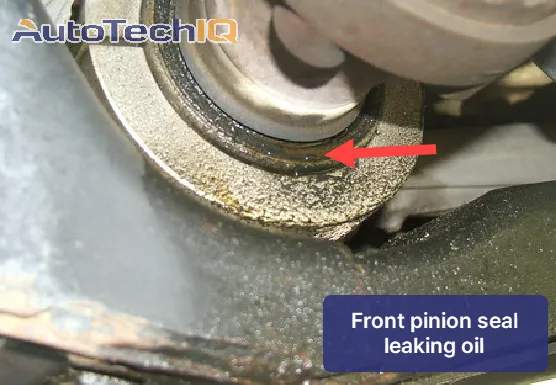
Vibrations: When the differential components wear unevenly or become damaged, the driver might feel vibrations, especially when turning or at specific speeds.
Resistance During Turning: A failing differential can cause the wheels to resist or "bind" during turns, giving a sensation of the vehicle fighting against the direction it's being steered.
Uneven Tire Wear: A malfunctioning differential can lead to differential wheel speeds, resulting in abnormal or accelerated wear patterns on the tires.
Educating Car Owners: A Story of the Differential Diagnosis Process
Have you ever wondered what a top-tier, trustful vehicle service looks like? We know how it is, and we'll share it with you through a fictional customer-technician interaction. The story, although fictional, is based on actual services and deals with a faulty front differential.
John, a car owner, brought his SUV into the shop after hearing weird noises during turns. The mechanic, Lisa, believed it might be an issue with the front differential and decided to take John through the diagnosis process.
Inspect: Lisa started with a visual inspection, looking for signs of damage and fluid leaks. She took several high-resolution images of the differential, photographing areas where she saw fluid leaks.
Test: Lisa then did a test drive and found that the front differential was binding on turns, making a clunking or ratcheting noise. Next, Lisa drove the SUV onto a lift and raised it to check the level and condition of the differential oil. Lisa took photos of the low differential oil that seemed to have metal in it. Lisa also spun one front wheel and noticed the noise was coming from the front differential.
Evaluate: Lisa did all the tests while getting good-quality data and images. Then, she showed John the images, proving the oil leaked from the pinion seal; the oil was also low and filled with metal particles. Next, she confirmed to John that the noise was coming from the front differential.
Diagnose: By combining the photos and test results, Lisa diagnosed that John's front differential was indeed failing and required replacement. The images provided strong proof, making it easier for John to understand the need for the service.
Confirm Repair is Completed: Once the differential was replaced, Lisa took John for a test drive, letting him feel the difference in the vehicle's performance. Back in the shop, she showed him post-repair images, focusing on how the new component looked compared to the worn-out one.
Through this detailed and visual process, John not only understood the importance of the differential replacement but also felt confident in Lisa's expertise and the service provided by the shop.
Top Causes of Front Differential Symptoms
Worn Out Bearings: Over time, the bearings in the differential can wear out, leading to noises like humming or grinding, and potentially causing misalignment of gears.
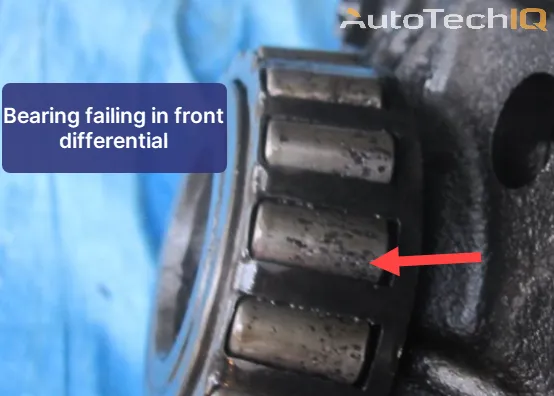
Low or Contaminated Fluid: Differential fluid lubricates and cools the components. If it's low or dirty, it can lead to overheating, increased friction, and component wear.
Damaged Gears: Gears can become chipped, broken, or misaligned. This results in grinding noises, poor performance, and, in severe cases, complete failure to transfer power.
Faulty Seals: When seals degrade or fail, they can cause fluid leaks, reducing the lubrication and cooling inside the differential and leading to other related issues.
Improper Alignment or Installation: If components aren't aligned correctly or the differential isn't installed properly, it can lead to vibrations, premature wear, and inefficient power distribution.
Top 5 Front Differential Fixes:
Fluid Change: Replacing old or contaminated differential fluid ensures proper lubrication, reducing friction and preventing premature wear of the internal components.
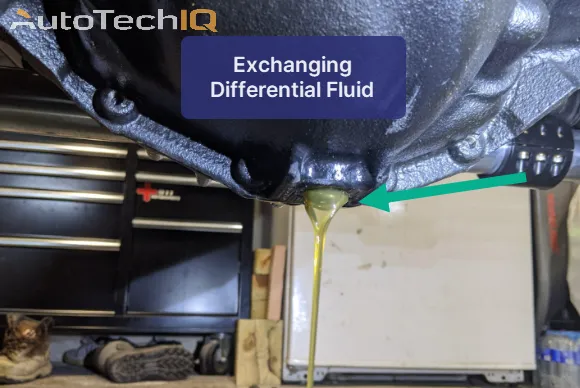
Bearing Replacement: Swapping worn-out bearings restores smooth operation, reduces noise, and prevents potential misalignment of gears inside the differential.
Seal Replacement: Replacing faulty seals stops fluid leaks, ensuring the differential remains well-lubricated and operates at optimal temperatures.
Gear Replacement or Adjustment: Addressing damaged or misaligned gears restores the differential's ability to distribute power efficiently and reduces grinding or clunking noises.
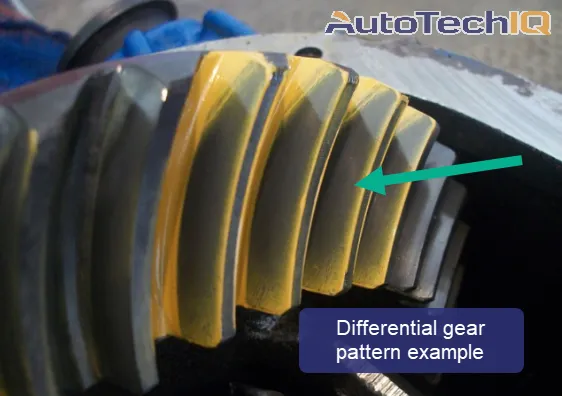
Complete Differential Replacement: In severe cases where multiple components are compromised, replacing the entire differential guarantees all parts are in optimal condition, ensuring long-term reliability and performance.
Summary
The front differential distributes power to the front wheels, helping the car turn smoothly. However, symptoms like unusual noises, vibrations, or fluid leaks can indicate potential issues. Common causes for issues range from worn bearings and damaged gears to low fluid levels. Investigating and checking these problems can involve fluid changes, bearing or seal replacements, gear adjustments, or, in more severe cases, a complete differential replacement. Regular maintenance and understanding of these signs ensure a vehicle's safe and efficient operation.
Find more information
Feel free to visit our 'Shop Near You' page and search for our certified repair shops in your area. These businesses provide top-notch services while also offering expert inspections using advanced diagnostic tools. You'll witness the same level of care and attention to detail that we've highlighted in this article. These shops share our goal of ensuring that your vehicle receives the best possible maintenance. At this goal's core, your knowledge of what's happening to your car and how to maintain it is our #1 priority.






